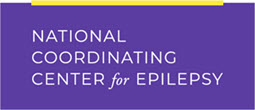The National Coordinating Center for Epilepsy has developed the Strengthen & Enhance Epilepsy Knowledge (SEEK) Training as a resource to help build capacity and start conversations amongst medical residents, school nurses, social workers, community health workers, and public health professionals regarding the care of children and youth with epilepsy. This training is intended to be self-guided or facilitated as a Lunch and Learn opportunity to encourage discussion in a short 30-minute presentation. This training consists of a pre-recorded didactic lecture presentation, presenter slides, and a case study for the facilitator.
Facilitated Lunch and Learn - Strengthen & Enhance Epilepsy Knowledge (SEEK) Training
Instructions: The stories below present various examples of the complexities and nuances associated with various epileptic syndromes, from the perspective of a pediatric clinician/medical home. It is recommended that these stories be presented and discussed during the Lunch and Learn series. Refer to the module slides to help guide the discussion.
1) Jayla is an 11-year-old girl who has had refractory seizures since infancy. She has significant developmental delay with intellectual disability. She takes 3 antiseizure medications daily, and despite this she still has multiple seizures per month which mostly occur at night and early in the morning, many of which are tonic-clonic seizures.
2) Malcolm is an 8-year- old boy with a recently diagnosed self-limited childhood epilepsy syndrome who is maintained on 1 antiseizure medication which he takes daily for seizure prevention. He has less than 2 seizures per year and has had only one tonic-clonic seizure.
Case study Questions & Answers
Use the questions below to guide conversation following these stories. Possible answers are bulleted below each question. The responses provided are by no means exhaustive.
1) Which of these children is at highest risk for SUDEP? Why?
Suggested Answers:
a) Jayla has multiple risk factors for SUDEP:
i) Early age of seizure onset
ii) Developmental delay
iii) Uncontrolled seizures
iv) Nocturnal seizures
2) How should a discussion of SUDEP be approached with the parents of Jayla versus the parents of Malcolm? How does the discussion differ?
Suggested Answers:
a) Discussion with Jayla’s caregivers should center around acknowledging that she is at high risk for SUDEP, and focus on prevention measures to include the following:
i) Medication/therapy compliance, consideration of surgical options if applicable.
ii) Avoidance of prone position while sleeping.
iii) Ensuring caregivers know seizure first aid and CPR.
iv) Consideration of sharing a room or having a seizure alert monitor.
b) Discussion with Malcolm’s caregivers regarding SUDEP may be limited, simply acknowledging that SUDEP can occur in persons with epilepsy, however, emphasizing that he has none of the reported SUDEP risk factors and is thus at low risk for SUDEP. SUDEP prevention measures should still be discussed, highlighting the following:
i) Ensuring caregivers know seizure first aid and CPR.
ii) Medication compliance.
3) What additional measures can be taken to reduce the risk of SUDEP?
a) Medication compliance
b) Consider seizure detection/alert devices for persons with nocturnal seizures
c) Caregiver training in CR
d) Avoid sleep deprivation
If you have any questionsregarding epilepsy orthisfacilitated minitraining, please contact: The National Coordinating Center for Epilepsy
This project is supported by the Health Resources and Services Administration (HRSA) of the U.S. Department of Health and Human Services (HHS) under grant number U23MC26252, Awareness and Access to Care for Children and Youth with Epilepsy cooperative agreement. This information or content and conclusions are those of the author and should not be construed as the official position or policy of, nor should any endorsements be inferred by HRSA, HHS, or the U.S. Government.
Last Updated
02/28/2023
Source
American Academy of Pediatrics
